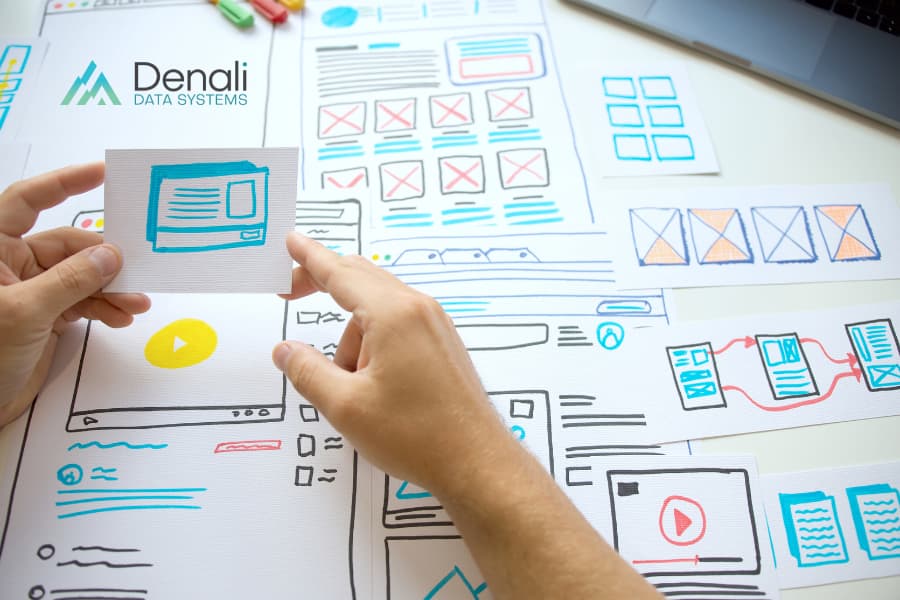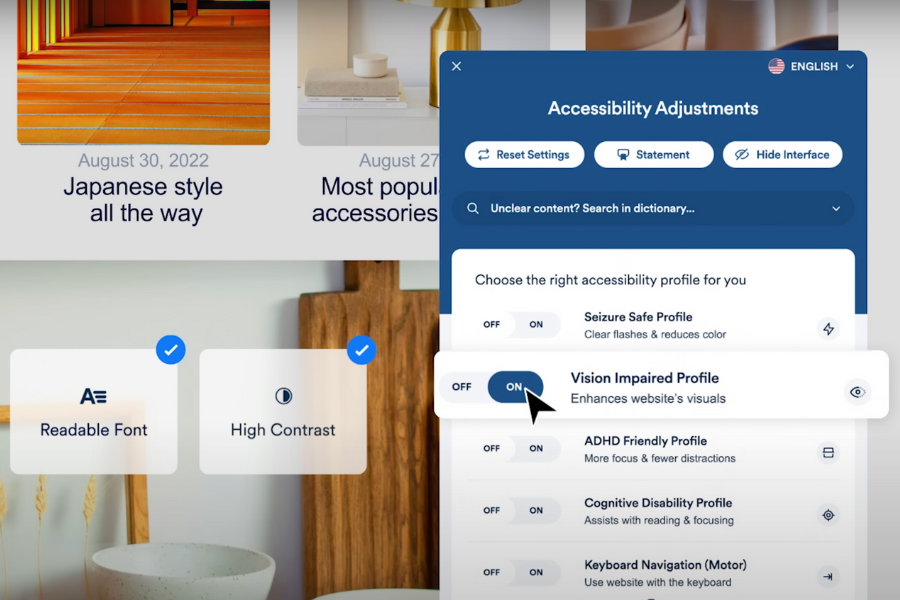The world of web design continues to evolve at a rapid pace. With technology advancing and user expectations shifting, staying on top of design trends is crucial for any website development company. In 2024, we’re witnessing a blend of innovation and refinement in web design trends that reflect a growing emphasis on user experience, visual appeal, and functionality. In this post, we’ll delve into the most compelling design trends thus far in 2024 and explore what’s gaining traction and what’s falling out of favor.
WHAT’S HOT IN 2024
1. Minimalism with a Twist Minimalism remains a dominant trend, but with a fresh perspective. Minimalism is evolving beyond simple color schemes and clean layouts. Designers are incorporating bold typography, dynamic animations, and strategic use of whitespace to create a more engaging user experience. The focus is on making each element purposeful, enhancing usability while maintaining a sleek and modern aesthetic.
2. Dark Mode Dominance Dark mode is more than just a user preference; it’s becoming a standard feature in web design. The benefits of dark mode include reduced eye strain, improved readability in low-light environments, and a sleek, contemporary look. As more websites and applications adopt this feature, it’s essential for designers to ensure that dark mode is implemented effectively, maintaining contrast and readability.
3. Micro-Interactions Micro-interactions are subtle animations or design elements that provide feedback to users as they interact with a website. In 2024, these interactions are becoming more sophisticated and integrated into the overall design. From animated buttons that respond to clicks to loading animations that entertain users while they wait, micro-interactions enhance the user experience by making it more interactive and engaging.
4. Inclusive and Accessible Design Inclusivity and accessibility are no longer optional; they are imperative. Websites are increasingly designed with accessibility in mind, ensuring they are usable for people with various disabilities. This includes implementing features like screen reader compatibility, keyboard navigation, and color contrast adjustments. Embracing inclusive design practices not only broadens your audience but also aligns with ethical and legal standards.
5. AI-Driven Personalization Artificial Intelligence (AI) is revolutionizing web design by enabling personalized user experiences. AI algorithms analyze user behavior and preferences to tailor content, recommendations, and interactions to individual users. This level of personalization enhances user engagement and satisfaction by delivering relevant content and improving overall site usability.
“In 2024, web design is all about creating experiences that resonate on a personal level. It’s not just about following trends, but understanding the why behind them—why users are drawn to dark mode, why micro-interactions matter, or why minimalist designs with bold elements captivate. With AI-driven personalization, we’re now able to tailor websites to individual users, analyzing behavior and preferences to deliver content that truly connects. A successful website is one that feels intuitive, engaging, and relevant, putting the user first at every step. As designers, our job is to blend creativity with technology, ensuring each element serves a purpose and enhances the overall experience.” – Charles Croley, Senior UX Designer
WHAT’S NOT IN 2024
1. Overuse of Stock Photography While stock photography has its place, its overuse can lead to generic and uninspired web designs. In 2024, there’s a growing preference for custom visuals and authentic imagery that reflect a brand’s unique identity. Investing in original photography and illustrations can create a more genuine connection with users.
 2. Outdated Design Elements Design trends from previous years, such as overly complex navigation menus and excessive use of skeuomorphism, are falling out of favor. Modern users prefer streamlined, intuitive interfaces that prioritize usability over decorative elements. Embracing current design trends means moving away from outdated practices and focusing on what enhances the user experience.
2. Outdated Design Elements Design trends from previous years, such as overly complex navigation menus and excessive use of skeuomorphism, are falling out of favor. Modern users prefer streamlined, intuitive interfaces that prioritize usability over decorative elements. Embracing current design trends means moving away from outdated practices and focusing on what enhances the user experience.
3. Heavy Reliance on Hover Effects While hover effects can add a layer of interactivity, excessive reliance on them can lead to a frustrating user experience, especially on touch devices where hover effects are not applicable. In 2024, designers are shifting towards more inclusive and responsive design practices that work seamlessly across all devices.
4. Fixed Layouts Fixed layouts, which do not adapt to different screen sizes, are becoming obsolete. With the rise of diverse devices and screen resolutions, responsive and fluid layouts are essential. Websites must adapt to various screen sizes and orientations to ensure a consistent and enjoyable user experience.
5. Overly Complicated User Flows Complex user flows and convoluted processes can drive users away. In 2024, the emphasis is on simplicity and clarity. Streamlining user flows, reducing the number of steps to complete actions, and providing clear calls-to-action are critical for keeping users engaged and satisfied.
Conclusion
The web design landscape in 2024 is characterized by a focus on minimalism with depth, the prevalence of dark mode, and the integration of micro-interactions. As trends shift, it’s essential to balance innovation with functionality and inclusivity. By staying abreast of these evolving trends and understanding what to avoid, designers can create compelling, user-centered websites that stand out in a competitive digital landscape.



